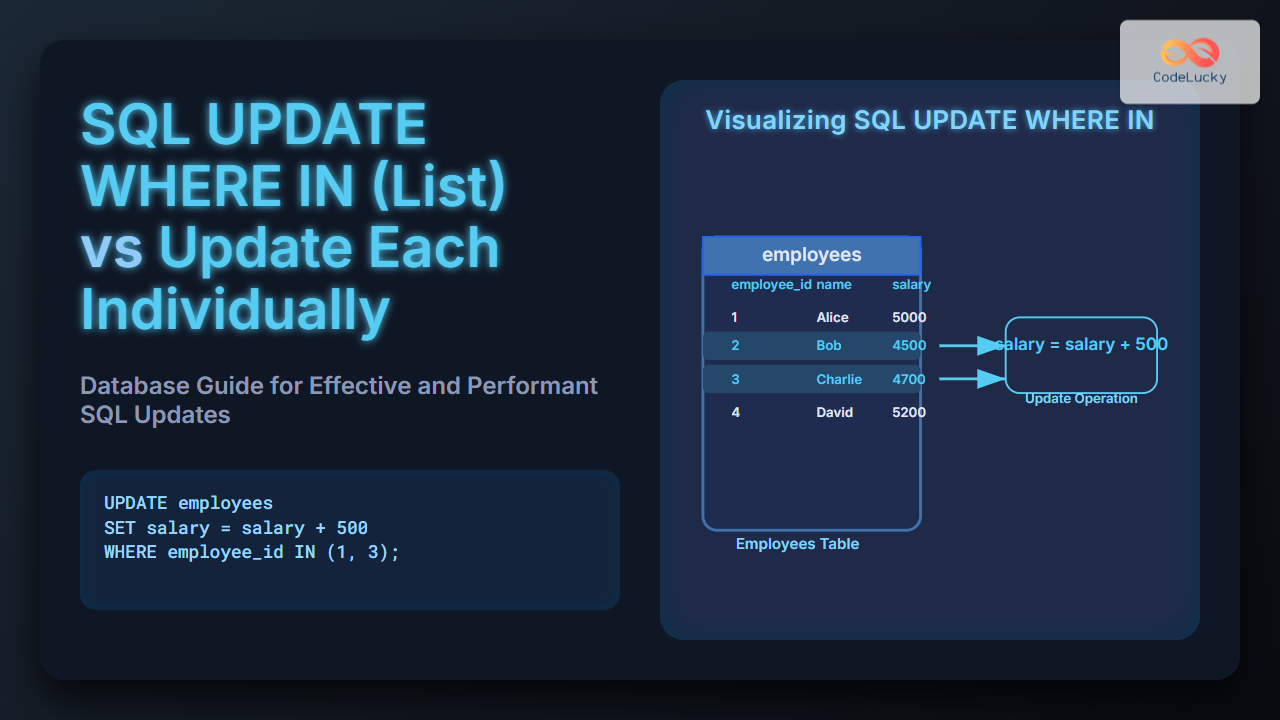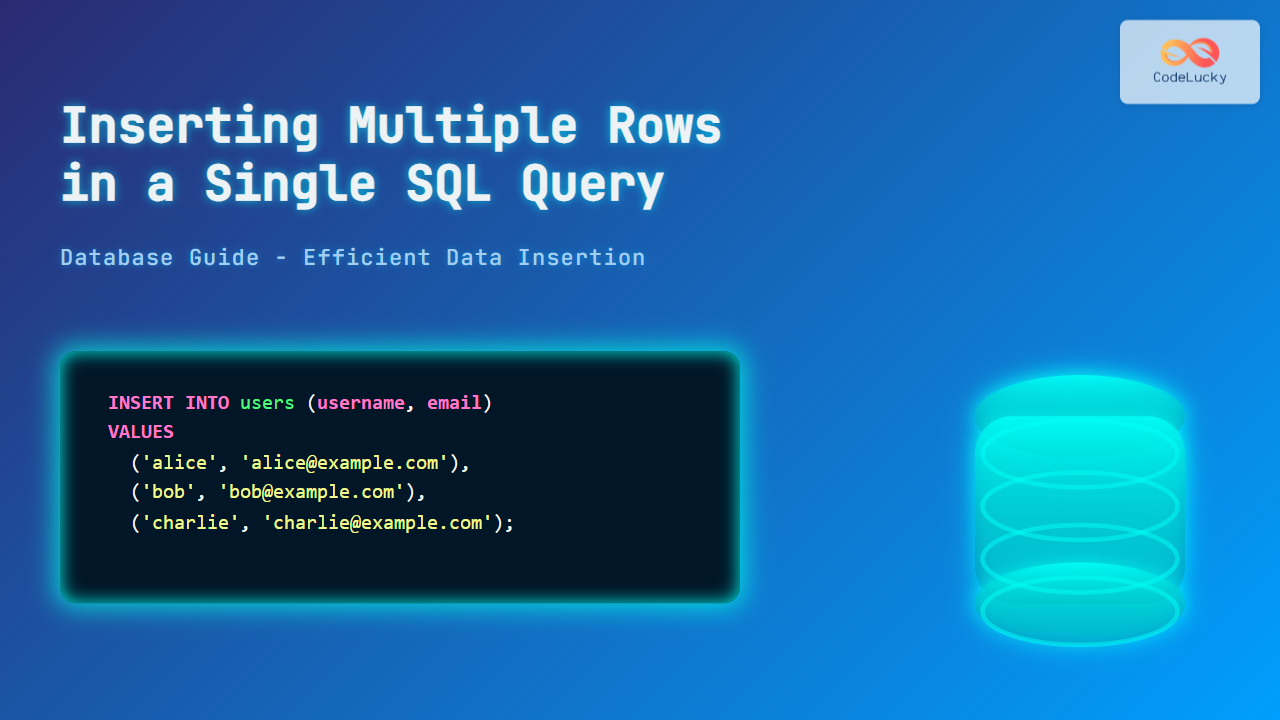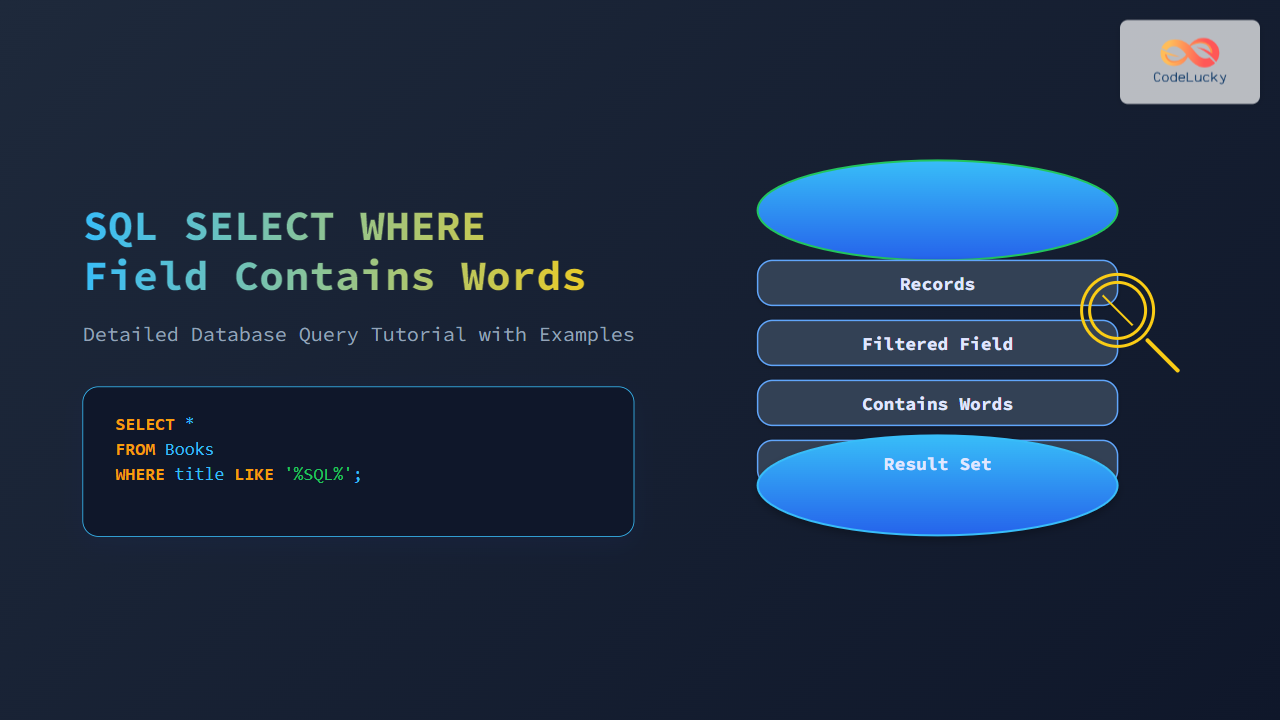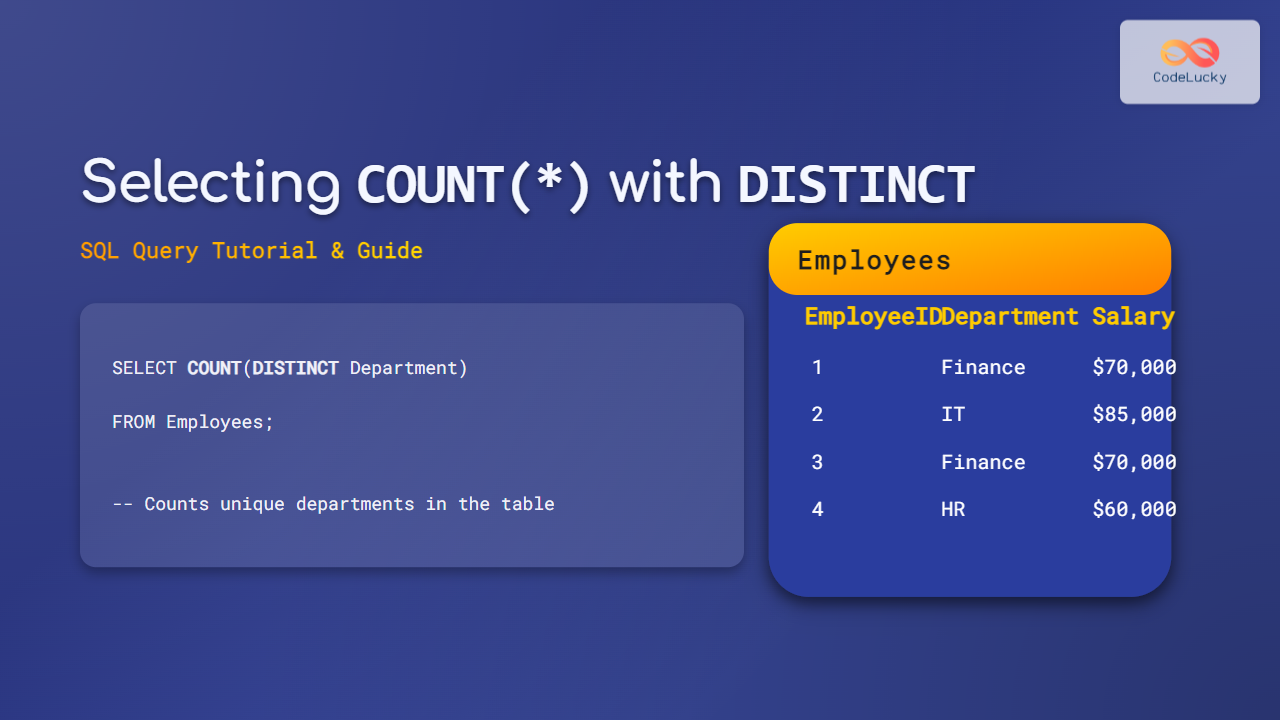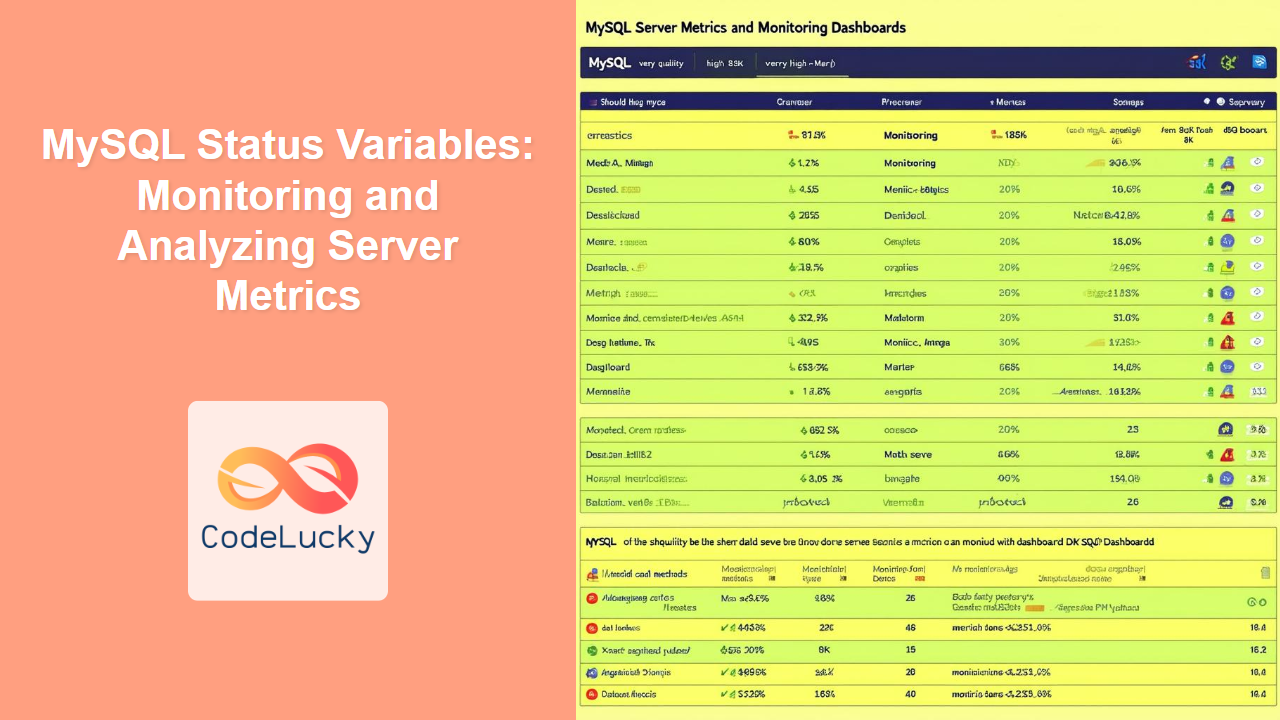In the world of databases, organizing and presenting data in a meaningful way is crucial. This is where the SQL ORDER BY clause comes into play. It's a powerful tool that allows you to sort your query results based on one or more columns, giving you control over how your data is presented. Whether you're a beginner just starting with SQL or an experienced developer looking to refine your skills, mastering the ORDER BY clause is essential for effective data manipulation and analysis.
Understanding the Basics of ORDER BY
The ORDER BY clause is used to sort the result set in ascending or descending order. By default, the ORDER BY clause sorts the records in ascending order. However, you can use the DESC keyword to sort the records in descending order.
Let's start with a simple example. Imagine we have a table called employees with the following data:
| employee_id | first_name | last_name | salary |
|---|---|---|---|
| 1 | John | Doe | 50000 |
| 2 | Jane | Smith | 60000 |
| 3 | Mike | Johnson | 55000 |
| 4 | Sarah | Williams | 52000 |
| 5 | David | Brown | 58000 |
To retrieve all employees sorted by their last name in ascending order, we would use:
SELECT * FROM employees
ORDER BY last_name;
This query would return:
| employee_id | first_name | last_name | salary |
|---|---|---|---|
| 5 | David | Brown | 58000 |
| 1 | John | Doe | 50000 |
| 3 | Mike | Johnson | 55000 |
| 2 | Jane | Smith | 60000 |
| 4 | Sarah | Williams | 52000 |
🔍 Pro Tip: The ORDER BY clause always comes after the FROM clause and any WHERE conditions in your SQL statement.
Sorting in Descending Order
To sort the results in descending order, we use the DESC keyword. Let's sort our employees by salary in descending order:
SELECT * FROM employees
ORDER BY salary DESC;
This query would return:
| employee_id | first_name | last_name | salary |
|---|---|---|---|
| 2 | Jane | Smith | 60000 |
| 5 | David | Brown | 58000 |
| 3 | Mike | Johnson | 55000 |
| 4 | Sarah | Williams | 52000 |
| 1 | John | Doe | 50000 |
Sorting by Multiple Columns
One of the most powerful features of the ORDER BY clause is the ability to sort by multiple columns. This is particularly useful when you want to sort by one column, and then by another column within the first sort.
For example, let's say we want to sort our employees first by their salary in descending order, and then by their last name in ascending order for employees with the same salary:
SELECT * FROM employees
ORDER BY salary DESC, last_name ASC;
In this case, the result would be the same as our previous example because all salaries are unique. However, if we had employees with the same salary, they would be sorted alphabetically by last name.
🎯 Key Point: When using multiple columns in ORDER BY, the sorting is applied in the order the columns are listed.
Using Column Position in ORDER BY
Instead of using column names, you can also use the position of the column in the SELECT statement to sort. For example:
SELECT first_name, last_name, salary FROM employees
ORDER BY 3 DESC, 2 ASC;
This query sorts by the third column (salary) in descending order, then by the second column (last_name) in ascending order. While this method can be convenient, it's generally considered better practice to use column names for clarity and maintainability.
Sorting with Expressions
The ORDER BY clause isn't limited to just column names. You can also use expressions. For instance, if you wanted to sort employees by the length of their last name:
SELECT * FROM employees
ORDER BY LENGTH(last_name);
This would return:
| employee_id | first_name | last_name | salary |
|---|---|---|---|
| 1 | John | Doe | 50000 |
| 2 | Jane | Smith | 60000 |
| 5 | David | Brown | 58000 |
| 3 | Mike | Johnson | 55000 |
| 4 | Sarah | Williams | 52000 |
💡 Interesting Fact: Using expressions in ORDER BY can be computationally expensive for large datasets, so use them judiciously.
NULL Values in ORDER BY
When sorting columns that contain NULL values, it's important to understand how SQL handles them. By default, NULL values are treated as the highest possible value when sorting in ascending order, and the lowest possible value when sorting in descending order.
Let's add a new column bonus to our employees table:
| employee_id | first_name | last_name | salary | bonus |
|---|---|---|---|---|
| 1 | John | Doe | 50000 | 2000 |
| 2 | Jane | Smith | 60000 | NULL |
| 3 | Mike | Johnson | 55000 | 1500 |
| 4 | Sarah | Williams | 52000 | NULL |
| 5 | David | Brown | 58000 | 3000 |
If we sort by the bonus column:
SELECT * FROM employees
ORDER BY bonus;
The result would be:
| employee_id | first_name | last_name | salary | bonus |
|---|---|---|---|---|
| 3 | Mike | Johnson | 55000 | 1500 |
| 1 | John | Doe | 50000 | 2000 |
| 5 | David | Brown | 58000 | 3000 |
| 2 | Jane | Smith | 60000 | NULL |
| 4 | Sarah | Williams | 52000 | NULL |
To change this behavior, you can use NULLS FIRST or NULLS LAST:
SELECT * FROM employees
ORDER BY bonus NULLS FIRST;
This would place the NULL values at the beginning of the result set.
ORDER BY with LIMIT
The ORDER BY clause is often used in conjunction with LIMIT to retrieve a specific number of top or bottom records. For example, to get the top 3 highest-paid employees:
SELECT * FROM employees
ORDER BY salary DESC
LIMIT 3;
This would return:
| employee_id | first_name | last_name | salary | bonus |
|---|---|---|---|---|
| 2 | Jane | Smith | 60000 | NULL |
| 5 | David | Brown | 58000 | 3000 |
| 3 | Mike | Johnson | 55000 | 1500 |
🚀 Advanced Tip: Combining ORDER BY with LIMIT is a common technique for implementing pagination in web applications.
ORDER BY in Subqueries
The ORDER BY clause can also be used in subqueries, but with some limitations. In most database systems, ORDER BY in a subquery is only allowed if LIMIT is also specified. For example:
SELECT * FROM employees
WHERE employee_id IN (
SELECT employee_id FROM employees
ORDER BY salary DESC
LIMIT 3
);
This query would select all columns for the top 3 highest-paid employees.
Case-Sensitive Sorting
By default, most SQL databases perform case-insensitive sorting. However, if you need case-sensitive sorting, you can use the BINARY keyword (in MySQL) or COLLATE clause (in SQL Server):
MySQL:
SELECT * FROM employees
ORDER BY BINARY last_name;
SQL Server:
SELECT * FROM employees
ORDER BY last_name COLLATE Latin1_General_CS_AS;
These queries would sort the last_name column in a case-sensitive manner.
Performance Considerations
While ORDER BY is a powerful tool, it's important to be aware of its performance implications, especially when dealing with large datasets:
-
Indexing: If you frequently sort on a particular column, consider creating an index on that column to improve performance.
-
Avoid sorting on computed columns: Sorting on computed columns or expressions can be slow because the database has to calculate the value for each row before sorting.
-
Limit the result set: If you only need a subset of the sorted data, use
LIMITto reduce the amount of data that needs to be sorted. -
Consider alternatives: For very large datasets, consider alternatives like using a covering index or pre-sorting data in a materialized view.
Conclusion
The SQL ORDER BY clause is a fundamental tool for organizing and presenting data in a meaningful way. From basic sorting to complex multi-column ordering, it offers a wide range of possibilities for data manipulation. By mastering the ORDER BY clause, you'll be able to retrieve data in exactly the order you need, making your queries more powerful and your data analysis more effective.
Remember, the key to becoming proficient with ORDER BY is practice. Try out different sorting scenarios, experiment with multiple columns, and explore how ORDER BY interacts with other SQL clauses. With time and experience, you'll find that ORDER BY becomes an indispensable part of your SQL toolkit, helping you to extract insights and present data in the most useful way possible.
Happy querying! 🎉














